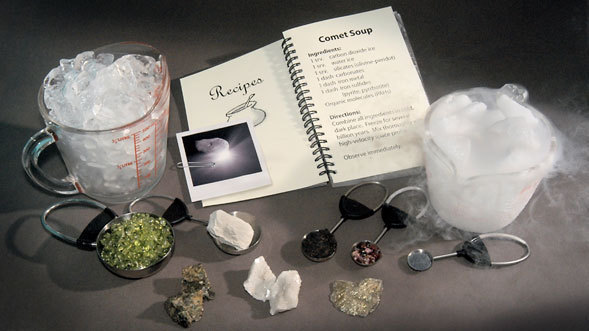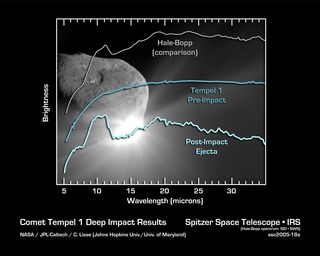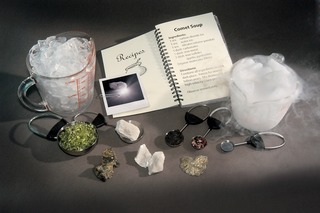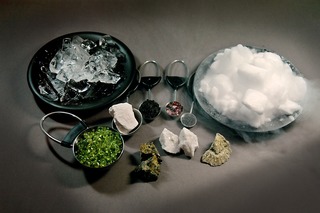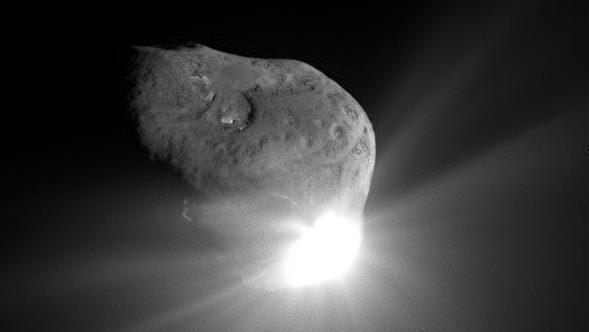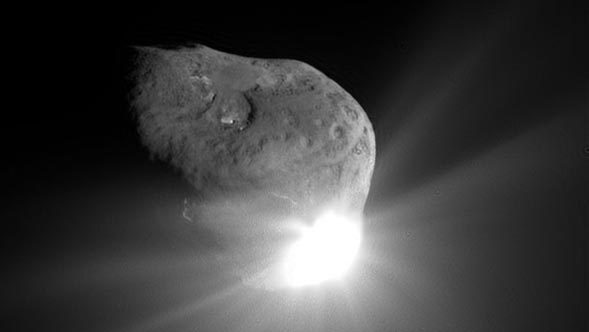
Credit: NASA/JPL-Caltech/C. Lisse (Johns Hopkins University/University of Maryland)
Chart • September 7th, 2005 • ssc2005-18a
ssc2005-18a
This graph shows the two spectra acquired by NASA's Spitzer Space Telescope before (middle) and after (bottom) it observed NASA's Deep Impact smash into comet Tempel 1. Above them is a past spectrum of comet Hale-Bopp, which illustrates the extra detail seen by Spitzer in Tempel 1.
Spectra are light from objects spread out into various wavelengths like a rainbow. Their bumps and dips, or features, help astronomers identify the components of faraway objects, like comets.
Spitzer's pre-impact spectrum reveals chemicals in comet Tempel 1's coma, or halo, of evaporating gas and trailing dust. The post-impact spectrum indicates the composition of the ejecta thrown out by Deep Impact's probe. The ejected material greatly outshines the faint coma.
Comparing the post-impact spectrum with that from Hale-Bopp demonstrates its richness and complexity. This complexity is a result of Deep Impact's excavation of Tempel 1's insides.
Though the post-impact spectrum is still being analyzed, it shows that Tempel 1's ejecta contain the following chemicals: smectite clay; iron-containing compounds; carbonates, the minerals in seashells; crystallized silicates, such as the green olivine minerals found on beaches and in the gemstone peridot; and polycyclic aromatic hydrocarbons, which are carbon-containing compounds found in car exhaust and on burnt toast.
Astronomers were most surprised to see clay, carbonates, and crystallized silicates because these chemicals are thought have formed in warm environments, possibly near the Sun, but away from the chilly outer neighborhood of comets. How did these compounds get inside comets? One possibility is that materials in our early solar system mixed together before being sorted out into individual bodies.
About the Object
- Name
- Comet Tempel 1
- Type
- Interplanetary Body > Comet > Coma
Color Mapping
| Band | Wavelength | Telescope |
| Infrared | 5.0 µm | Spitzer IRS |
| Infrared | 35.0 µm | Spitzer IRS |
